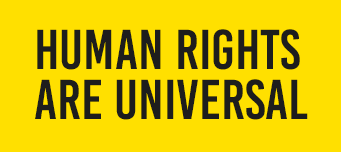Beyond the Brush Art as an Engine for Human Rights

In the complex landscape of human rights advocacy, one of the greatest challenges is bridging the gap between abstract principles and lived realities. How do we make the suffering of a refugee in a distant land, or the systemic discrimination faced by a marginalized community, resonate with someone who has never experienced such hardship? The answer lies not just in data or legal frameworks, but in the profound, transformative power of art and storytelling.
As one astute observer noted, "art is meant to show and not to tell you." This distinction is critical. If you were to tell someone, "all people in America are starving, they eating cats and dogs," it would likely be met with disbelief or dismissal. It's a statement that lacks personal connection and is easily refutable. But imagine if, as humorously suggested, "I had a cute chihuahua painting, and then next week was a barbecue... it would be easy for you to relate to something, or a poem about it." While extreme, this example highlights the visceral impact of art. It allows for a leap of imagination, an emotional connection that transcends mere information.
Art ignites senses, creates a moment of immersion, and fosters empathy. When we engage with a powerful painting depicting the plight of refugees, we're not just reading a statistic; we're witnessing a fragment of their journey, feeling the weight of their experience. A poignant poem about discrimination can open our hearts to the pain of prejudice in a way that a legal brief never could. This is because art, in its myriad forms – visual, auditory, performance-based – bypasses intellectual defenses and speaks directly to the human spirit.
For marginalized communities, art becomes an even more vital tool. Often denied platforms and silenced by dominant narratives, their stories are frequently distorted or erased. Art provides an unmediated space for self-expression, allowing these communities to reclaim their narratives, assert their identities, and share their truths on their own terms. It empowers them to become creators of meaning, rather than passive subjects of someone else's story.
Moreover, art can reach communities that might otherwise be unreachable through conventional advocacy methods. Think of street art in urban centers, community theater in rural villages, or music that becomes an anthem for a movement. These are accessible, relatable forms of communication that speak to local contexts and cultural nuances. They provide "things that communities can relate with," fostering a sense of shared understanding and collective action.
The goal is to "change how people see the community, changing how people see human rights." This requires dismantling deeply entrenched stereotypes and biases. If a community believes that "human rights are not pizza," meaning that fighting for women's rights doesn't diminish men's rights, it's not because they've read a UN declaration. It's because they've experienced stories, seen art, or participated in dialogues that illustrate the universal and indivisible nature of human rights.
Art, in essence, is the empathy engine. It fuels understanding, bridges divides, and transforms abstract concepts into lived realities. In the ongoing struggle for human rights, leveraging this power isn't just an option; it's an imperative.






